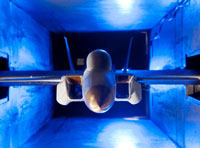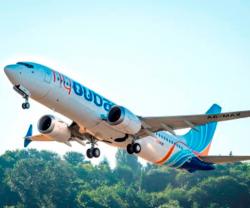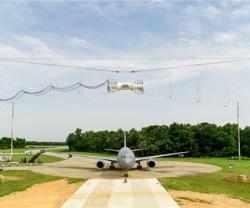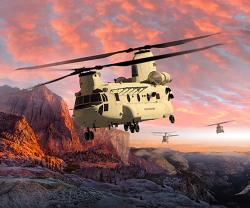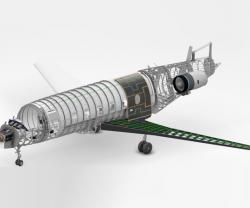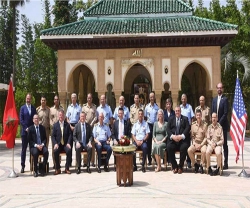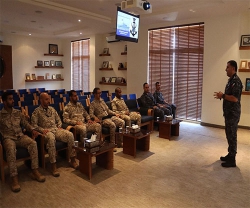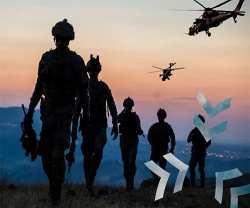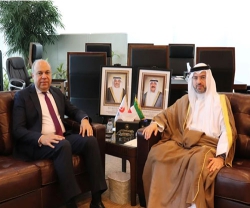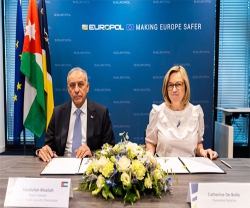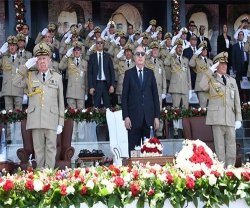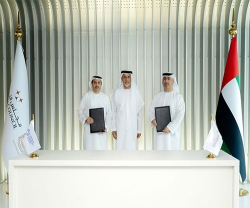Boeing Completes Wind Tunnel Tests on Silent Eagle CWB
27.06.2012 North America
Boeing recently completed wind tunnel tests on the Silent Eagle Conformal Weapons Bay (CWB). The tests, conducted at the company's St. Louis facility, validated the aerodynamics of the CWB design.
CWBs are integral to the adaptable configuration and balanced survivability of the Silent Eagle.
“Boeing and its partners have advanced to the next phase in the development of the Silent Eagle, an evolved derivative of the combat-proven F-15 family of aircraft. We are now testing production-representative hardware as we continue to validate our affordable and low-risk design,” said Roger Besancenez, F-15 Program Vice President for Boeing.
Boeing is partnering with Korea Aerospace Industries (KAI) to design, develop and manufacture the CWB. The Silent Eagle is Boeing's offer in the F-X competition for the Republic of Korea's multirole fighter aircraft.
The wind tunnel tests used a scale model of the Silent Eagle to determine the effect of various air speeds and flight angles. The tests assessed enhancements made to the initial CWB design and confirmed the team's modeling analysis.
More detailed tests later this year will focus on the aerodynamic effects of multiple weapons loads, as well as opening and closing the upper and lower CWB doors.
Boeing this year also completed the final phase of Radar Cross Section (RCS) reduction tests to validate the aircraft's production configuration.
The Silent Eagle is designed with advanced technologies that provide an unprecedented balance of survivability and lethality to meet warfighters' needs in all phases of air combat. The CWBs can be reconfigured to Conformal Fuel Tanks (CFTs) to optimize the aircraft for longer ranges and increased weapons loading, making the Silent Eagle a flexible platform with unmatched range, speed, payload and persistence.
The reconfigurable CWB-CFT concept is unique in the fighter aircraft world and contributes to the overall RCS reduction package while the aircraft maintains both air-to-air and air-to-surface capabilities.
The Silent Eagle also features enhanced avionics such as an integrated Active Electronically Scanned Array radar and Digital Electronic Warfare Suite that provide the aircrew with increased lethality and exceptional situational awareness.
CWBs are integral to the adaptable configuration and balanced survivability of the Silent Eagle.
“Boeing and its partners have advanced to the next phase in the development of the Silent Eagle, an evolved derivative of the combat-proven F-15 family of aircraft. We are now testing production-representative hardware as we continue to validate our affordable and low-risk design,” said Roger Besancenez, F-15 Program Vice President for Boeing.
Boeing is partnering with Korea Aerospace Industries (KAI) to design, develop and manufacture the CWB. The Silent Eagle is Boeing's offer in the F-X competition for the Republic of Korea's multirole fighter aircraft.
The wind tunnel tests used a scale model of the Silent Eagle to determine the effect of various air speeds and flight angles. The tests assessed enhancements made to the initial CWB design and confirmed the team's modeling analysis.
More detailed tests later this year will focus on the aerodynamic effects of multiple weapons loads, as well as opening and closing the upper and lower CWB doors.
Boeing this year also completed the final phase of Radar Cross Section (RCS) reduction tests to validate the aircraft's production configuration.
The Silent Eagle is designed with advanced technologies that provide an unprecedented balance of survivability and lethality to meet warfighters' needs in all phases of air combat. The CWBs can be reconfigured to Conformal Fuel Tanks (CFTs) to optimize the aircraft for longer ranges and increased weapons loading, making the Silent Eagle a flexible platform with unmatched range, speed, payload and persistence.
The reconfigurable CWB-CFT concept is unique in the fighter aircraft world and contributes to the overall RCS reduction package while the aircraft maintains both air-to-air and air-to-surface capabilities.
The Silent Eagle also features enhanced avionics such as an integrated Active Electronically Scanned Array radar and Digital Electronic Warfare Suite that provide the aircrew with increased lethality and exceptional situational awareness.
Previous PostGA-ASI Deploys 1st Full Company of Gray Eagle UAS
Latest news
Latest events
IDEF 2025 Turkey - International Defence Industry Fair
22 - 27 Jul 2025Istanbul Expo Center - TurkeyDSEI 2025
09 - 12 Sep 2025Excel, London - United KingdomIntersec Saudi Arabia
29 Sep - 01 Oct 2025Riyadh International Exhibition & Convention Centre - Saudi ArabiaDubai International Air Chiefs’ Conference (DIACC 2025)
16 Nov 2025Atlantis, The Palm Dubai - United Arab Emirates

